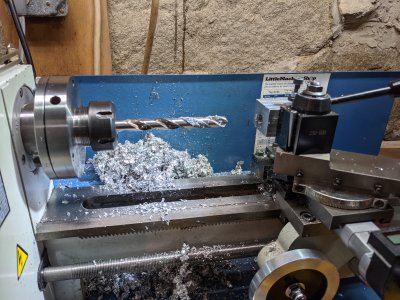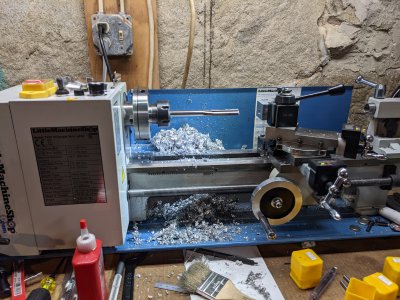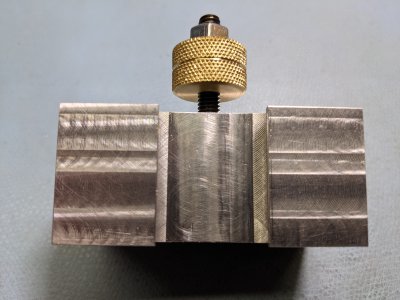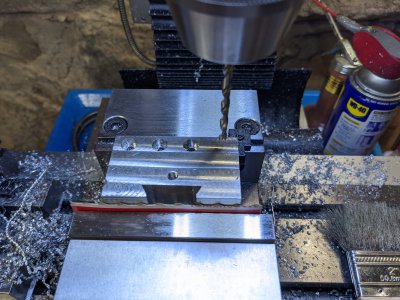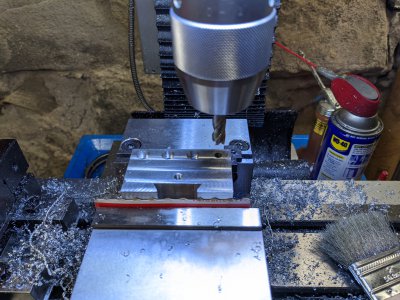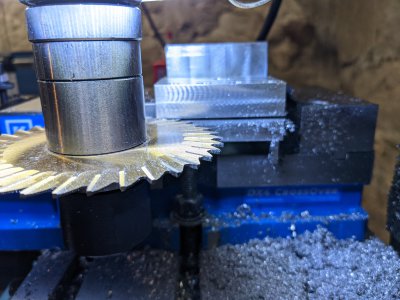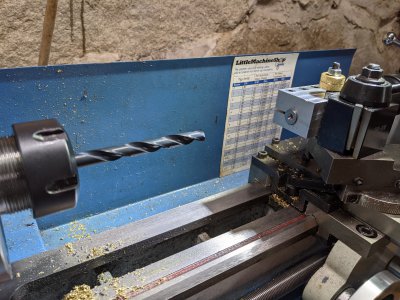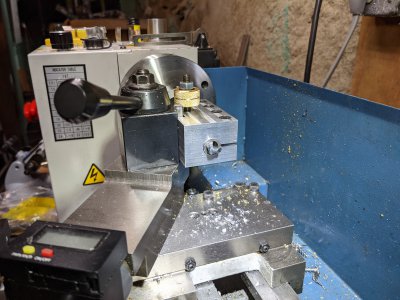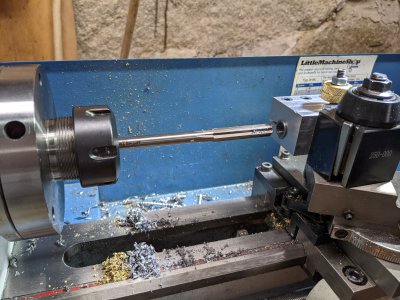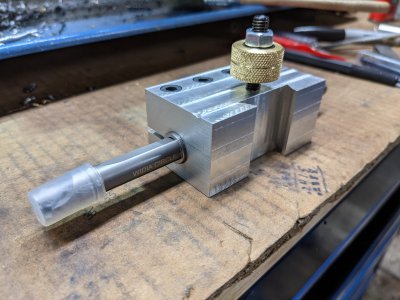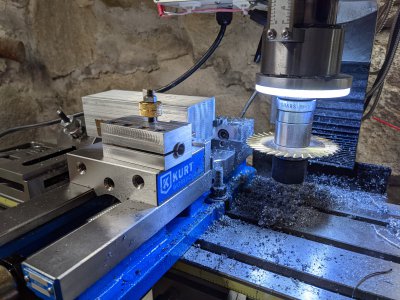- Joined
- Dec 18, 2019
- Messages
- 6,464
Played around in CAD and made a drawing. Think I know the answer, but why is it that I should not do this in my mill? To do this in my lathe, I will not be able to make the piece as exactly, since I have no edge finders nor fancy DRO's. I will need to eyeball the dimensions, which I have already done.
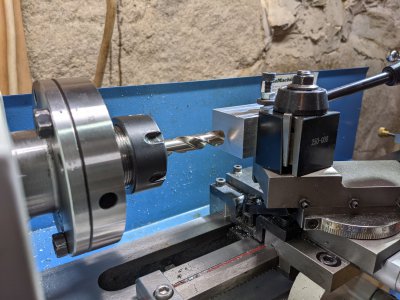
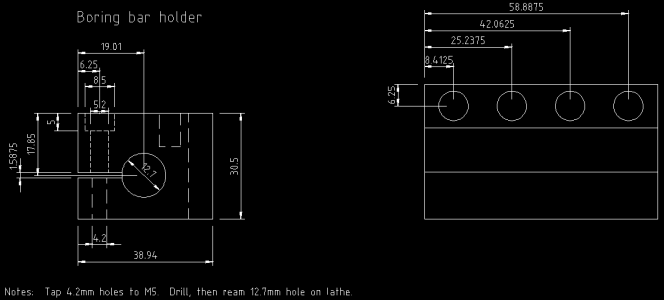
I have a 15/16" & 31/64 drill (or will on Tuesday) and a 15/16" ER32 collet. Don't have a 31/64" collet, could I use a 4 jaw and indicate the drill bit? Or should I shop for a 31/64" collet? Not sure if I should clamp down a 1/2" collet that far (about 0.016") I heard is is bad for concentricity. Also have a 0.500" reamer and the matching 7/16" collet.
You do spy a too short 15/16" drill bit in the lathe. Unfortunately I don't have a quality jobber length bit in that size, only HF. I have learned not to use HF bits for anything critical, having been burned 3 too many times.
Is there anything I need to especially watch out for when drilling this out?


I have a 15/16" & 31/64 drill (or will on Tuesday) and a 15/16" ER32 collet. Don't have a 31/64" collet, could I use a 4 jaw and indicate the drill bit? Or should I shop for a 31/64" collet? Not sure if I should clamp down a 1/2" collet that far (about 0.016") I heard is is bad for concentricity. Also have a 0.500" reamer and the matching 7/16" collet.
You do spy a too short 15/16" drill bit in the lathe. Unfortunately I don't have a quality jobber length bit in that size, only HF. I have learned not to use HF bits for anything critical, having been burned 3 too many times.
Is there anything I need to especially watch out for when drilling this out?


